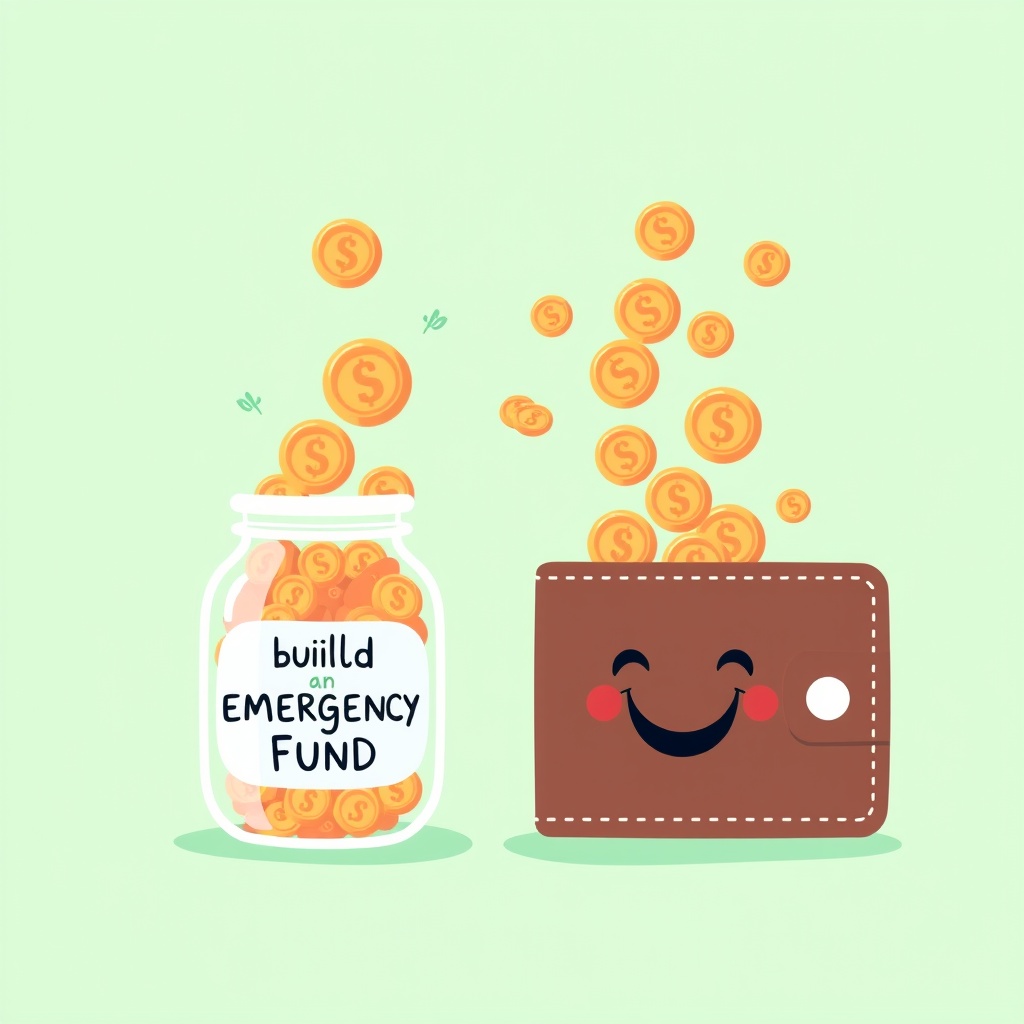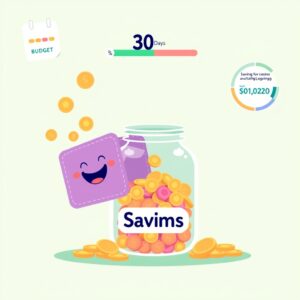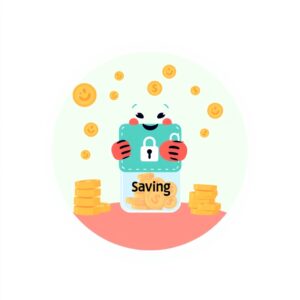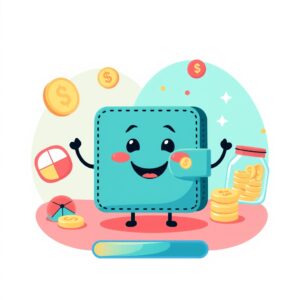Estimated reading time: 8 minutes
Key Takeaways
- Understand the critical role of an emergency fund in financial stability.
- Implement strategies like budget optimization, increasing income, and automating savings to build your fund quickly.
- Utilize technology and tracker apps to monitor and manage your savings effectively.
- Integrate saving for down payments with your emergency fund for comprehensive financial planning.
- Develop a long-term savings plan and a personalized savings roadmap to achieve your financial goals.
Table of Contents
- Understanding the Importance of an Emergency Fund
- Strategies to Build an Emergency Fund Fast
- Utilizing Technology: Emergency Fund Tracker Apps
- Saving for a Down Payment: Leveraging Save for Down Payment Apps
- Developing a Long Term Savings Plan
- Creating a Personal Savings Roadmap
Understanding the Importance of an Emergency Fund
Building an emergency fund quickly is crucial for achieving financial stability. In this comprehensive guide, we will explore how you can build an emergency fund fast, with the help of strategies, apps, and a clear savings roadmap to set major financial goals. Let’s dive into how you can secure your financial future today.
Importance for Financial Stability
An emergency fund is a dedicated savings account designed to cover unexpected expenses such as medical bills, car repairs, or job loss. Without it, financial stress can significantly impact your peace of mind and stability. Learn more about the importance here.
An emergency fund acts as a safety net. It ensures you don’t have to rely on credit cards or loans during emergencies, preserving your financial health. More on why it matters can be found on NerdWallet and Vanguard.
Scenarios Necessitating an Emergency Fund
Emergencies are unpredictable. Job loss, sudden medical expenses, or urgent car repairs can occur at any time. Having readily available funds is crucial in these situations. Comprehensive information on this is available here.
Peace of Mind
Having an emergency fund reduces anxiety, allowing you to navigate financial setbacks with confidence. This security enhances your overall quality of life. For more information, explore this resource.
Strategies to Build an Emergency Fund Fast
Budget Optimization
- Review Your Expenses: Identify and cut unnecessary costs, such as unused subscriptions or dining out too frequently. (How to Track Discretionary Spending)
- Reallocating Funds: Adjust your budget to prioritize and consistently contribute to your emergency fund. Every dollar counts when your goal is to build an emergency fund fast. Utilize the 50/30/20 rule calculator to help allocate your funds effectively.
Increasing Income Streams
- Explore Side Gigs: Part-time or freelance work can provide quick boosts to your income. Opportunities like ride-sharing, delivery, or freelance writing are excellent options.
- Leverage Your Skills: Utilize your marketable skills (e.g., design, tutoring) to take on extra work. This not only diversifies your income but positively impacts your savings capability.
Automating Savings
- Set Automatic Transfers: Arrange for regular, automatic transfers from your checking to your emergency savings account.
- Consistency is Key: Automation ensures regular saving habits, accelerating the growth of your emergency fund. Consider using micro saving apps to automate your savings effectively.
Utilizing Technology: Emergency Fund Tracker Apps
Overview of Emergency Fund Tracker Apps
An emergency fund tracker app helps users monitor savings progress, set goals, and automate contributions. They offer features like reminders, goal-setting capabilities, and visual progress indicators. Apps simplify savings by making the process more interactive and less overwhelming.
Top Recommended Emergency Fund Tracker Apps
- Mint: Focuses on budgeting and tracking overall financial health.
- Pros: Comprehensive budgeting, user-friendly.
- Cons: Overwhelming data can confuse some users.
- YNAB (You Need a Budget): Offers a proactive approach with budget planning.
- Pros: Detailed budgeting process, educational resources.
- Cons: Subscription fee after trial period.
- Qapital: Utilizes a rules-based approach to automate savings.
- Pros: Flexible rules, great for goal setting.
- Cons: Limited budgeting tools compared to others.
How to Effectively Use an Emergency Fund Tracker App
- Setup: Create an account, link your bank accounts, and set specific emergency fund goals.
- Automation: Define auto-transfer rules and consistently review the insights provided by the app.
- Motivation: Enable notifications and use gamification to stay engaged with your savings goals. For more insights on daily tracking, refer to The Ultimate Guide to Using a Daily Expense Tracker App.
Saving for a Down Payment: Leveraging Save for Down Payment Apps
Importance of Saving for a Down Payment
A down payment is often required for major purchases like a house. Saving for it aligns with broader financial planning, helping to manage debts early on.
Best Save for Down Payment App Options
- Digit: Automates savings with the ability to set specific goals.
- Acorns: Rounds up spare change to save or invest. Great for bridging small gaps in your savings goals.
These apps streamline savings with automated deposits and round-up features, helping users methodically reach larger financial targets. Compare different budgeting tools in our Pennies App vs YNAB: A Comprehensive Comparison for Effective Budgeting.
Integrating Down Payment Savings with an Emergency Fund
- Use Sub-goals: Designate accounts or use sub-goals within the same app for easier tracking.
- Prioritize: Choose which fund to contribute to first based on immediate financial needs, usually starting with the emergency fund.
Developing a Long Term Savings Plan
Components of a Long Term Savings Plan
A long-term savings plan is a structured approach to achieving broader financial objectives. Set realistic goals, timeframes, and milestones to measure progress.
Aligning Emergency Funds with Long Term Goals
The emergency fund contributes essential stability, ensuring that your long-term plans (retirement, education) aren’t disrupted by unexpected expenses.
Tools and Resources for Long Term Savings
Apps like Ally Bank and Personal Capital support comprehensive, long-term tracking and help users choose between automation and manual management styles. Explore different budgeting methods, such as the Envelope Budgeting App: Your Guide to a Digital Envelope System.
Creating a Personal Savings Roadmap
Steps to Develop a Personalized Savings Roadmap
A personal savings roadmap is a blueprint outlining your financial goals. To start:
- Assess Current Finances: Understand debts, monthly income, and living costs.
- Set Targets: Establish short-, medium-, and long-term goals.
- Monitor Progress: Consistently adjust the roadmap as personal circumstances evolve.
Incorporating Multiple Savings Goals
Apply prioritization methods like the 50/30/20 rule to ensure emergency funds, down payments, and other savings receive appropriate funds.
Staying Motivated and Consistent
Break goals into smaller milestones and celebrate each achievement. Leverage app-based tools, such as trackers, reminders, and badges to maintain enthusiasm.
Conclusion
In summary, building an emergency fund fast is crucial for financial stability. Strategies like budget optimization, multiple income streams, and automation, paired with the right tech solutions, streamline achieving major savings goals. These approaches also support down payments and comprehensive financial security, setting you up for success.
Call to Action
Download and explore the recommended apps to see which options suit you best. Share this post with friends or family seeking practical financial guidance. For additional learning, check out related resources or blog posts to continue exploring financial topics.
For further reading, have a look at this detailed guide on establishing a strong personal savings roadmap.
FAQ
What is an emergency fund and why is it important?An emergency fund is a dedicated savings account designed to cover unexpected expenses such as medical bills, car repairs, or job loss. It’s important because it acts as a financial safety net, preventing you from relying on credit cards or loans during emergencies, thereby preserving your financial health and reducing stress.
How much should I aim to save in my emergency fund?While the ideal amount can vary based on individual circumstances, a common recommendation is to save between three to six months’ worth of living expenses. This provides a substantial buffer to cover unexpected costs or income loss without disrupting your financial stability.
What are the best apps for tracking and managing my emergency fund?Some of the top recommended apps include Mint, YNAB (You Need a Budget), and Qapital. These apps offer features like budgeting tools, automated savings, goal tracking, and financial insights to help you efficiently build and manage your emergency fund.
How can I integrate saving for a down payment with my emergency fund?You can integrate saving for a down payment by setting sub-goals within the same savings app or designating separate accounts for each goal. Prioritize contributing to your emergency fund first to ensure financial security, then allocate additional savings towards your down payment as you progress.
What strategies can help me build my emergency fund quickly?Effective strategies include optimizing your budget by cutting unnecessary expenses, increasing your income through side gigs or leveraging your skills, and automating your savings with regular transfers. Utilizing budgeting principles like the 50/30/20 rule and tracking your progress with apps can also accelerate your savings growth.




